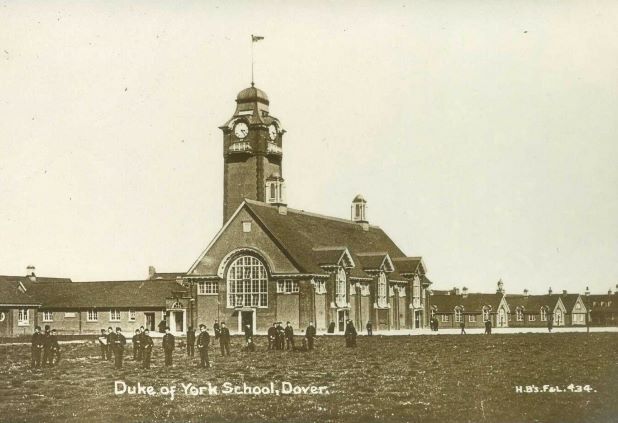ZEPPELINS, GOTHAS & 'GIANTS'
THE STORY OF BRITAIN'S FORGOTTEN BLITZ 1914-1918
22 September 1916
Bombed: Kent
An unidentified German aircraft – described both as an Albatros and a seaplane – approached the Kent coast unobserved at 3.00pm at a height of about 10,000 feet. Initially heading towards Deal, the aircraft turned towards Dover, taking advantage of cloud cover to hide its progress. About a mile north-east of Dover, when over the Duke of York’s School, which served as barracks for 6th Royal Fusiliers, an observer for the Frith Farm AA gun spotted the raider and Dover’s guns opened an intense fire at the fast moving target. The aircraft dropped three HE bombs: one fell in the grounds of the school and two in an adjacent field, all close to the airfield of 50 Squadron, RFC. The only damage was some broken windows at the school and cut telephone wires. The AA guns at Frith Farm, Citadel, Fort Burgoyne, Langdon Battery and those naval guns at the harbour, at East Arm and Prince of Wales Pier, fired off 99 rounds between them making life uncomfortable for the raider who now turned out to sea, making towards Deal from where a 12-pdr gun also fired 12 rounds.
Two RNAS aircraft took off from Dover at 3.10pm as did two from 50 Squadron, RFC. Six minutes later two more RNAS aircraft went up from Dover and at about the same time two aircraft from RNAS Manston were airborne too. Over the next 15 minutes three more RNAS aircraft also took off, from Westgate and Grain, but it was all too late. Despite having 11 aircraft in the air not a shot was fired in anger. Only the two RFC pilots managed to keep the retreating raider in sight, but after 20 minutes they too lost him in the clouds.
Duke of York's School
Casualties: 0 killed, 0 injured
Damage: £5
Follow Us
© Ian Castle 2021
